Home>diy>Planning & Engineering>What Does An Urban Planning Engineer Do


Planning & Engineering
What Does An Urban Planning Engineer Do
Modified: January 4, 2024
Discover the role of an urban planning engineer and their responsibilities in shaping cities. Learn how planning-engineering promotes sustainable development and improves quality of life.
(Many of the links in this article redirect to a specific reviewed product. Your purchase of these products through affiliate links helps to generate commission for Storables.com, at no extra cost. Learn more)
Introduction
An urban planning engineer plays a crucial role in shaping the cities and communities we live in. This multidisciplinary profession combines elements of engineering, architecture, and urban design to create sustainable and livable environments. Urban planning engineers are responsible for envisioning and implementing development projects that enhance the quality of life for residents, improve transportation systems, and promote the efficient use of resources.
In this article, we will explore the various aspects of what an urban planning engineer does, including their education and training, roles and responsibilities, and the impact they have on urban development.
Urban planning engineers possess a unique skill set that allows them to integrate multiple disciplines to create well-designed, functional, and aesthetically pleasing urban spaces. From managing infrastructure projects to conducting environmental impact assessments, their work is essential in creating vibrant and sustainable communities.
So, let’s delve into the world of urban planning engineering and discover the key tasks and responsibilities that these professionals undertake to create the cities of tomorrow.
Key Takeaways:
- Urban planning engineers blend engineering, architecture, and urban design to create sustainable and vibrant cities. Their diverse roles span transportation planning, infrastructure design, environmental impact assessment, and stakeholder collaboration.
- Data-driven insights and holistic approaches define the work of urban planning engineers. Their commitment to inclusive decision-making and sustainable development shapes resilient, inclusive, and vibrant urban environments.
Read more: Why Urban Planning Is Important
Education and Training
Becoming an urban planning engineer requires a solid educational foundation in engineering, architecture, or urban planning. Most professionals in this field possess at least a bachelor’s degree in one of these fields, and many go on to pursue advanced degrees or specialized certifications.
At the undergraduate level, students can pursue degrees in civil engineering, architecture, environmental science, or urban planning. These programs provide essential technical knowledge in areas such as structural design, urban design principles, transportation systems, and environmental planning.
Graduate programs in urban planning or urban design offer more focused coursework and research opportunities in the field. These programs delve deeper into topics such as land use planning, sustainable development, social equity, and urban policy. They also often include internships or practical experiences that allow students to apply their learning in real-world scenarios.
Furthermore, professional certifications, such as the American Institute of Certified Planners (AICP), are highly valued in the industry. These certifications demonstrate advanced knowledge and expertise in urban planning and are often required or preferred by employers.
In addition to formal education, aspiring urban planning engineers should also develop a strong foundation in computer-aided design (CAD) software, geographic information systems (GIS), and data analysis tools. These technical skills are essential for analyzing spatial data, creating visual representations of proposed projects, and conducting simulations or modeling.
Continuing education and staying updated on the latest trends and best practices in urban planning and engineering is also crucial. Attending workshops, seminars, and professional conferences can provide opportunities to network with industry professionals and gain insights into emerging technologies and strategies.
In summary, a combination of formal education, specialized coursework, and practical experience is essential to become an urban planning engineer. With a strong educational foundation and continuous professional development, individuals can acquire the knowledge and skills necessary to tackle the complex challenges of urban development.
Roles and Responsibilities
Urban planning engineers have diverse roles and responsibilities that encompass various aspects of urban development. Their primary objective is to create sustainable, functional, and resilient cities that meet the needs of their inhabitants. Here are some key roles and responsibilities of urban planning engineers:
- City and Regional Planning: Urban planning engineers contribute to the development of comprehensive city and regional plans. This involves analyzing existing infrastructure, land use patterns, and population growth projections to identify areas for development, conservation, and improvement. They assess the social, economic, and environmental impacts of proposed developments and suggest strategies for long-term sustainable growth.
- Transportation Systems: Urban planning engineers play a crucial role in designing and managing transportation systems in urban areas. They analyze traffic patterns, evaluate the effectiveness of existing infrastructure, and propose improvements to enhance mobility and reduce congestion. This includes designing efficient public transportation networks, pedestrian-friendly streetscapes, and accessible cycling infrastructure.
- Infrastructure Development: Urban planning engineers are involved in the planning and development of various infrastructure projects, such as water supply and sanitation systems, energy grids, and telecommunications networks. They ensure that these systems are designed to meet the needs of the growing population while considering factors like sustainability, resilience, and cost-effectiveness.
- Environmental Planning: Urban planning engineers assess the environmental impact of development projects and propose measures to mitigate negative effects. They analyze factors such as air and water pollution, green space availability, and energy consumption to design environmentally friendly communities. This includes incorporating green infrastructure, promoting renewable energy sources, and safeguarding natural resources.
- Zoning and Land Use: Urban planning engineers collaborate with policymakers and government officials to develop zoning policies and regulations that govern land use within a city or region. They ensure that land is utilized efficiently and in line with the overall development goals. This includes designating areas for residential, commercial, and industrial purposes, as well as preserving environmentally sensitive lands.
- Community Engagement: Urban planning engineers engage with local communities and stakeholders to gather feedback, address concerns, and incorporate their input into development projects. They organize public meetings, workshops, and consultations to ensure that the needs and aspirations of the community are incorporated into the planning process. This collaborative approach fosters a sense of ownership and promotes community-led development initiatives.
In summary, urban planning engineers play a pivotal role in shaping cities and communities. Their responsibilities span the entire spectrum of urban development, from creating comprehensive plans to designing sustainable transportation systems and managing infrastructure projects. By considering social, environmental, and economic factors, these professionals contribute to the creation of functional, vibrant, and inclusive urban spaces.
Urban Development Planning
Urban development planning is a critical aspect of an urban planning engineer’s role. It involves creating comprehensive plans and strategies to guide the growth and development of cities and communities. The goal is to create sustainable, resilient, and livable environments that meet the needs and aspirations of the residents.
Urban planning engineers are involved in all stages of the planning process, from conducting research and data analysis to preparing proposals and implementing development projects. Here are some key elements of urban development planning:
- Needs Assessment: Urban planning engineers begin by conducting a thorough assessment of the current and projected needs of the city or community. This includes analyzing population growth, economic trends, housing demands, transportation requirements, and environmental concerns. By understanding these factors, they can develop plans that address the specific needs and challenges of the area.
- Visioning and Goal Setting: Based on the needs assessment, urban planning engineers work with stakeholders and community members to establish a vision and goals for the city. This involves defining the desired future state of the urban environment, identifying priorities, and setting targets for various aspects such as transportation, land use, infrastructure, and sustainability.
- Land Use Planning: Urban development planning incorporates land use strategies that determine how different areas of the city will be utilized. This includes designating areas for residential, commercial, industrial, recreational, and green spaces. This process ensures that land is used efficiently and effectively to promote functional and well-balanced communities.
- Infrastructure Planning: Urban planning engineers assess the existing infrastructure and develop plans to meet the future needs of the growing population. This includes determining the location and design of roads, bridges, utilities, and other essential infrastructure. By planning for efficient and well-connected infrastructure, they help enhance mobility, reduce congestion, and improve the overall quality of life.
- Sustainability Integration: Sustainable development is a crucial aspect of urban development planning. Urban planning engineers incorporate environmentally friendly practices, such as promoting energy-efficient buildings, implementing green infrastructure, and conserving natural resources. They strive to create cities that are environmentally responsible, socially inclusive, and economically viable in the long run.
- Implementation and Monitoring: Once the plans are finalized, urban planning engineers oversee the implementation of development projects. They coordinate with various stakeholders, including government agencies, contractors, and community organizations. They also monitor the progress and impact of the projects, conduct evaluations, and make any necessary adjustments to ensure the successful realization of the urban development plans.
Urban development planning requires a holistic and integrated approach, considering the social, economic, environmental, and cultural aspects of a community. Urban planning engineers bring together different disciplines and expertise to create sustainable urban environments that improve the quality of life for residents, enhance connectivity, and promote economic growth.
Infrastructure Design and Management
Infrastructure design and management is a crucial aspect of an urban planning engineer’s role. It involves planning, designing, and managing the physical infrastructure necessary to support a city’s functionality and growth. This includes roads, bridges, utilities, transportation systems, and public spaces.
Here are some key elements of infrastructure design and management that urban planning engineers are responsible for:
- Needs Assessment: Urban planning engineers begin by conducting a comprehensive needs assessment to identify the infrastructure requirements of a city or community. This includes analyzing population growth, traffic patterns, utility demands, and environmental considerations. By understanding the existing and projected needs, they can develop infrastructure solutions that can accommodate future requirements.
- Conceptual and Detailed Design: Once the needs assessment is complete, urban planning engineers move on to the design phase. This involves developing conceptual designs that outline the overall layout and functionality of the infrastructure systems. They consider factors such as efficiency, cost-effectiveness, and sustainability in their design approach. From there, they create detailed designs that specify the materials, dimensions, and construction methods.
- Coordinating with Engineers and Architects: Urban planning engineers work closely with civil engineers, architects, and other professionals to ensure that the infrastructure designs meet the necessary technical requirements and regulatory standards. This collaboration ensures that infrastructure projects are structurally sound, aesthetically pleasing, and aligned with overall urban planning goals.
- Project Management: Urban planning engineers are responsible for overseeing the implementation of infrastructure projects. This involves managing timelines, budgets, and resources, as well as coordinating with contractors and subcontractors. They also ensure that construction activities comply with safety regulations, environmental guidelines, and quality standards.
- Maintenance and Upgrades: Once infrastructure projects are completed, urban planning engineers continue to be involved in their management and maintenance. This includes conducting regular inspections, identifying maintenance needs, and planning for upgrades or expansions as the city grows. They also play a role in managing the lifecycle of infrastructure assets, ensuring that they are well-maintained and replaced when necessary.
- Asset Management: Urban planning engineers are involved in the management of infrastructure assets throughout their entire lifecycle. They develop strategies to optimize the use of existing infrastructure, enhance asset performance, and extend its lifespan. This includes implementing asset management systems, conducting condition assessments, and making data-driven decisions about repairs, replacements, and upgrades.
Infrastructure design and management is crucial for the smooth functioning of cities and communities. Urban planning engineers play a vital role in ensuring that infrastructure systems are well-designed, efficiently managed, and able to meet the evolving needs of the population. By incorporating sustainable practices, these professionals contribute to creating resilient and resource-efficient urban environments.
Read more: What Does A Construction Engineer Do?
Transportation Planning
Transportation planning is a key responsibility of urban planning engineers. It involves designing and managing transportation systems to enhance mobility, improve connectivity, and support the efficient movement of people and goods within a city or region.
Here are some key elements of transportation planning that urban planning engineers focus on:
- Transportation Needs Assessment: Urban planning engineers conduct an assessment of the transportation needs of the city or community. This includes analyzing current traffic patterns, studying population growth projections, and identifying areas with high demand for transportation services. By understanding these needs, they can develop effective strategies to meet the transportation requirements of the population.
- Public Transit Planning: Urban planning engineers play a critical role in developing efficient and sustainable public transit systems. This includes designing bus and rail networks, determining optimal routes and schedules, and ensuring accessibility for all residents. They also assess the need for additional transportation modes such as light rail, tramways, or innovative mobility solutions to meet changing mobility demands.
- Active Transportation Infrastructure: Urban planning engineers promote active transportation options, such as walking and cycling, to reduce reliance on cars and promote healthier and more sustainable modes of transportation. This involves designing safe and accessible pedestrian and cycling infrastructure, including sidewalks, bike lanes, and multi-use paths. They also consider factors such as connectivity to public transit and accessibility for people of all ages and abilities.
- Traffic Management: Urban planning engineers analyze traffic flow patterns, identify congested areas, and develop strategies to mitigate traffic congestion. This includes optimizing traffic signal timings, implementing intelligent transportation systems, and improving intersections and road designs to enhance traffic flow. They also consider the impact of transportation systems on air quality and noise pollution and work towards reducing adverse effects.
- Parking Planning and Management: Urban planning engineers assess parking demand, design parking facilities, and develop strategies for efficient parking management. This includes determining the location and capacity of parking structures, implementing pricing mechanisms to encourage efficient use of parking spaces, and integrating smart parking solutions to optimize parking availability.
- Transportation Demand Management: Urban planning engineers develop strategies to manage transportation demand and encourage alternative modes of transportation. This includes promoting ridesharing, carpooling, and the use of public transit by offering incentives and implementing policies that discourage single-occupancy vehicle use. They also work with employers to develop transportation demand management programs for their employees.
Transportation planning plays a crucial role in creating sustainable and efficient cities. Urban planning engineers employ innovative strategies to design transportation systems that reduce congestion, improve accessibility, and enhance the overall quality of life for residents. By focusing on multimodal transportation options and promoting sustainable modes of transportation, these professionals contribute to the development of greener and more livable urban environments.
A tip for urban planning engineers is to stay updated on the latest technology and software used in the field, such as GIS mapping and 3D modeling, to enhance your design and analysis capabilities.
Environmental Impact Assessment
Environmental impact assessment (EIA) is a vital component of urban planning engineering. It involves assessing and mitigating the potential environmental effects of development projects, ensuring that they are executed in a sustainable and responsible manner.
Here are some key aspects of environmental impact assessment that urban planning engineers focus on:
- Identifying Environmental Risks: Urban planning engineers conduct thorough assessments to identify the potential environmental risks associated with development projects. This includes analyzing factors such as air and water pollution, habitat destruction, noise pollution, and the generation of waste. By understanding these risks, they can develop strategies to minimize negative impacts and protect the surrounding environment.
- Assessing Environmental Impacts: Urban planning engineers evaluate the direct and indirect environmental impacts of development projects. This includes considering factors such as the project’s carbon footprint, ecological disturbance, and the depletion of natural resources. Through comprehensive analysis and modeling, they can quantify and assess the potential environmental effects.
- Developing Mitigation Strategies: Based on the environmental impact assessment, urban planning engineers develop strategies to mitigate the negative effects of development projects. This includes proposing measures to reduce pollution, protecting sensitive habitats, implementing green building practices, and promoting sustainable resource management. They also explore opportunities to enhance biodiversity and ecosystem services within the development area.
- Environmental Regulations and Compliance: Urban planning engineers ensure that development projects comply with local and national environmental regulations and standards. They facilitate coordination between the project team and regulatory authorities to ensure that all necessary permits and approvals are obtained. They also monitor the implementation of environmental mitigation measures and conduct regular inspections to ensure compliance throughout the project lifecycle.
- Environmental Monitoring and Reporting: Urban planning engineers oversee the monitoring and evaluation of environmental conditions throughout the project. They establish monitoring programs to assess the effectiveness of mitigation measures, track environmental indicators, and ensure compliance with environmental regulations. They also prepare comprehensive reports documenting the environmental performance of the project and provide recommendations for future improvements.
- Public Engagement: Urban planning engineers engage with the public and stakeholders to gather input and address concerns related to the environmental impacts of development projects. They organize public consultations, meetings, and workshops to ensure transparency and inclusivity in the decision-making process. By incorporating the perspectives of the community, they can develop more holistic and sustainable solutions.
Environmental impact assessment is crucial in promoting sustainable development practices. Urban planning engineers play a vital role in ensuring that development projects are designed and executed with minimal environmental harm. By integrating environmental considerations and implementing appropriate mitigation strategies, they contribute to creating environmentally responsible and resilient urban environments.
Stakeholder Consultation and Collaboration
Stakeholder consultation and collaboration are integral components of urban planning engineering. It involves engaging with various stakeholders, including community members, local organizations, government entities, and industry experts, to gather input, gain consensus, and promote inclusive decision-making.
Here are key aspects of stakeholder consultation and collaboration that urban planning engineers focus on:
- Identifying Stakeholders: Urban planning engineers identify and engage with stakeholders who have an interest or are affected by development projects. This may include residents, businesses, community organizations, environmental groups, government representatives, and other relevant parties. Recognizing the diversity of stakeholders ensures that their perspectives are considered during the planning and decision-making processes.
- Public Meetings and Workshops: Urban planning engineers organize public meetings, workshops, and open houses to provide opportunities for stakeholders to share their opinions, concerns, and ideas. These gatherings allow for direct communication and engage stakeholders in the planning process. Workshops can also be conducted to facilitate collaborative problem-solving and enhance understanding among different groups.
- Public Surveys and Feedback: Urban planning engineers utilize surveys and feedback mechanisms to gather input from stakeholders who may not be able to attend in-person events. These tools provide an opportunity for a wider audience to express their views and contribute to decision-making. Stakeholders’ input can guide the development of projects and ensure that community needs and preferences are considered.
- Collaborative Planning and Design: Urban planning engineers facilitate collaboration among stakeholders during the planning and design phases. This can involve forming advisory committees or task forces that include representatives from various stakeholder groups. Collaborative efforts foster collective problem-solving, encourage community ownership, and lead to more inclusive and sustainable outcomes.
- Government and Agency Coordination: Urban planning engineers work closely with government agencies and regulatory bodies to ensure compliance with policies, guidelines, and regulations. Collaboration with these entities helps navigate the regulatory landscape and promotes alignment of project goals with broader planning objectives. It also contributes to a more efficient and streamlined approval process for development projects.
- Transparency and Communication: Urban planning engineers maintain transparent and open lines of communication with stakeholders throughout the planning and implementation phases. This includes providing regular updates, sharing information, and addressing concerns or questions raised by stakeholders. Transparent communication fosters trust, increases understanding, and ensures that stakeholders are informed about the progress and outcomes of development projects.
Stakeholder consultation and collaboration are essential to ensure that the interests and perspectives of all those affected by development projects are considered. By engaging stakeholders and incorporating their input, urban planning engineers can create more inclusive, sustainable, and successful projects. Collaboration with stakeholders promotes a sense of ownership, builds community resilience, and ultimately leads to the creation of vibrant and livable urban environments.
Data Analysis and Research
Data analysis and research play a crucial role in the work of urban planning engineers. These professionals rely on data-driven insights to make informed decisions and develop effective strategies for urban development. By analyzing and interpreting data, they can better understand the current state of a city or community, identify trends and patterns, and provide evidence-based recommendations.
Here are some key aspects of data analysis and research in the field of urban planning engineering:
- Data Collection: Urban planning engineers collect various types of data to inform their decision-making process. This may include demographic data, land use information, transportation data, environmental data, and socioeconomic indicators. They employ techniques such as surveys, aerial imagery, satellite data, and geographic information systems (GIS) to gather and analyze the relevant data.
- Data Management: Handling and managing large volumes of data is a critical aspect of data analysis and research. Urban planning engineers utilize databases and data management systems to organize and store data. They also ensure data accuracy, integrity, and security, and adhere to privacy regulations when dealing with sensitive information.
- Data Analysis Techniques: Urban planning engineers employ various statistical and analytical techniques to extract meaningful insights from the collected data. This may include spatial analysis, regression analysis, trend analysis, and data visualization techniques. By applying these methods, they can identify patterns, correlations, and relationships within the data.
- Trend Monitoring and Forecasting: Urban planning engineers monitor trends and project future scenarios based on data analysis. They analyze population growth, transportation patterns, economic trends, and environmental indicators to anticipate future needs and challenges. This helps them develop proactive strategies and plans that can adapt to changing circumstances.
- Impact Assessment: Data analysis is pivotal in assessing the potential impact of development projects on various aspects of the urban environment. Urban planning engineers employ techniques such as environmental impact assessments, traffic impact assessments, and socioeconomic impact studies to understand the consequences of proposed projects and develop appropriate mitigation measures.
- Evidence-Based Decision Making: Data analysis and research provide urban planning engineers with the evidence they need to make informed decisions. By relying on objective data, they can validate assumptions, justify recommendations, and prioritize actions. This ensures that planning decisions are based on sound analysis and have a higher likelihood of success.
Data analysis and research serve as the foundation for evidence-based urban planning. By harnessing the power of data, urban planning engineers can gain valuable insights and develop strategies that address the unique challenges of a city or community. It helps them make informed decisions, optimize resource allocation, and create sustainable and resilient urban environments.
Read more: What Does Civil Engineering Do
Project Management
Project management is a critical skill for urban planning engineers as they are responsible for overseeing the implementation of development projects. Effective project management ensures that projects are completed on time, within budget, and meet the desired objectives. From planning to execution, urban planning engineers navigate through the complexities of project execution and ensure successful outcomes.
Here are key aspects of project management in the field of urban planning engineering:
- Project Planning: Urban planning engineers develop comprehensive project plans that outline the scope, objectives, timelines, and resource requirements. This includes creating work breakdown structures, setting milestones, and identifying the critical path. Project plans serve as a blueprint to guide the execution of the project.
- Resource Allocation: Urban planning engineers allocate resources such as funding, personnel, and equipment based on project requirements. They coordinate with stakeholders and management to secure necessary resources and optimize their utilization. Efficient resource management ensures project efficiency and effective outcomes.
- Team Coordination: Urban planning engineers work closely with cross-disciplinary teams to ensure smooth project execution. They facilitate effective communication, provide guidance, and foster collaboration among team members. By promoting a collaborative and inclusive work environment, they enhance productivity and team performance.
- Risk Management: Urban planning engineers identify and mitigate potential risks throughout the project lifecycle. This includes conducting risk assessments, developing risk management strategies, and implementing appropriate risk mitigation measures. By proactively addressing risks, they minimize the likelihood of project delays, budget overruns, and other adverse outcomes.
- Monitoring and Control: Urban planning engineers continuously monitor project progress to ensure that it stays on track. They track key performance indicators, assess project quality, and manage changes and deviations from the original plan. By maintaining control over the project, they can address issues promptly and make necessary adjustments to keep the project aligned with objectives.
- Stakeholder Engagement: Urban planning engineers engage with stakeholders throughout the project to keep them informed, address concerns, and gain their support. Regular updates, meetings, and communication platforms are used to ensure that stakeholders are engaged in the decision-making process and have a clear understanding of the project’s progress.
- Quality Assurance: Urban planning engineers ensure that project deliverables meet the required quality standards. They establish quality control processes, conduct inspections and tests, and implement quality assurance measures. By adhering to quality standards, they enhance the overall success and longevity of the project.
- Project Evaluation and Lessons Learned: Urban planning engineers conduct project evaluations to assess the outcomes and impacts of completed projects. They identify lessons learned and make recommendations for improvement in future projects. This feedback loop helps enhance project management practices and ensures continuous improvement.
Effective project management is essential for successful execution of development projects. Urban planning engineers possess the skills to navigate complex projects, manage resources, mitigate risks, and maintain stakeholder satisfaction. Through thoughtful planning, proactive coordination, and diligent monitoring, they ensure that projects are completed in a timely and efficient manner, resulting in the realization of sustainable and vibrant urban environments.
Conclusion
Urban planning engineers play a vital role in shaping the cities and communities we live in. Their expertise in engineering, architecture, and urban design allows them to create sustainable and livable environments that meet the needs of the population. Through their diverse roles and responsibilities, these professionals contribute to the development and enhancement of our urban landscapes.
From education and training to project management and stakeholder consultation, urban planning engineers utilize a wide range of skills and knowledge to tackle the complex challenges of urban development. They conduct thorough research and data analysis to make informed decisions, considering factors such as transportation planning, infrastructure design, environmental impact assessment, and community collaboration.
One of the key strengths of urban planning engineers is their ability to integrate various disciplines and incorporate a holistic approach to urban development. They seek to create efficient transportation systems, environmentally friendly infrastructure, and sustainable land use patterns. Their commitment to inclusivity and collaboration ensures that stakeholders are engaged in the decision-making process, leading to more well-rounded and community-led outcomes.
The work of urban planning engineers is not only about physical structures but also about creating spaces that enhance the quality of life for residents. Through thoughtful planning and design, they strive to create vibrant, resilient, and inclusive urban environments that promote social equity, economic growth, and environmental sustainability.
In conclusion, urban planning engineers are instrumental in shaping the cities of tomorrow. With their deep knowledge, multidisciplinary expertise, and commitment to sustainable development, they make significant contributions to creating functional, beautiful, and sustainable urban spaces that improve our quality of life and enhance our communities.
Frequently Asked Questions about What Does An Urban Planning Engineer Do
Was this page helpful?
At Storables.com, we guarantee accurate and reliable information. Our content, validated by Expert Board Contributors, is crafted following stringent Editorial Policies. We're committed to providing you with well-researched, expert-backed insights for all your informational needs.
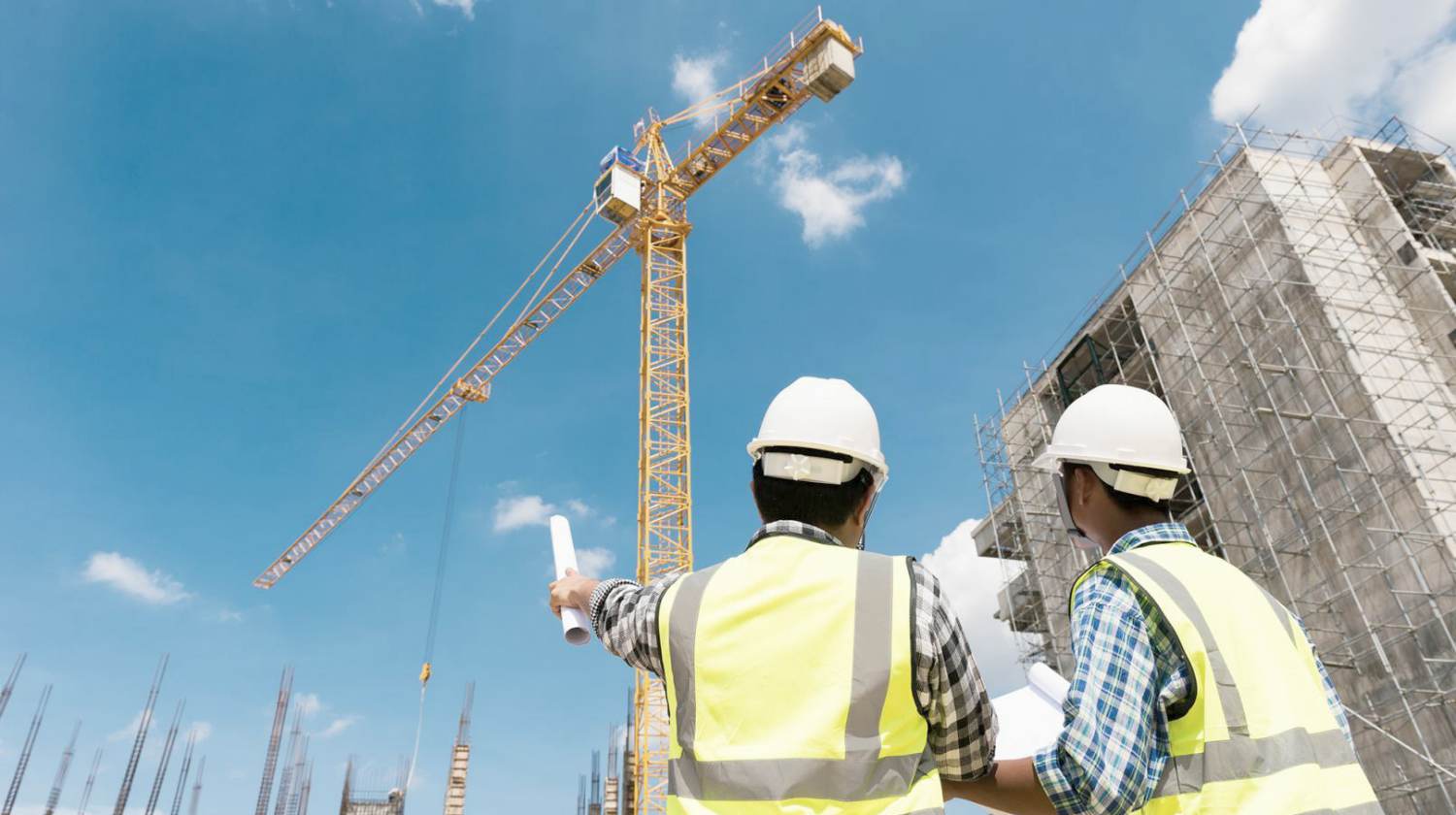


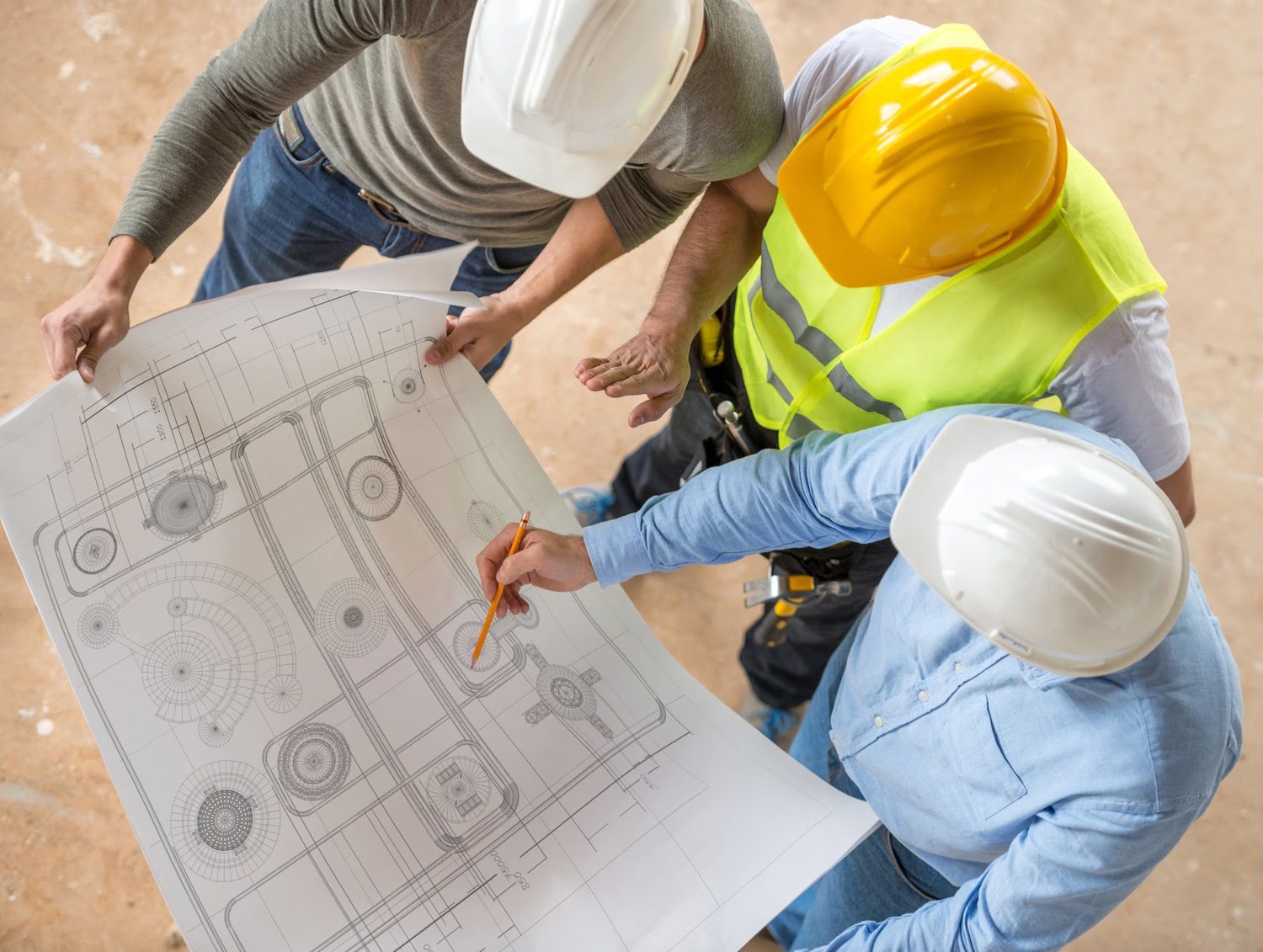



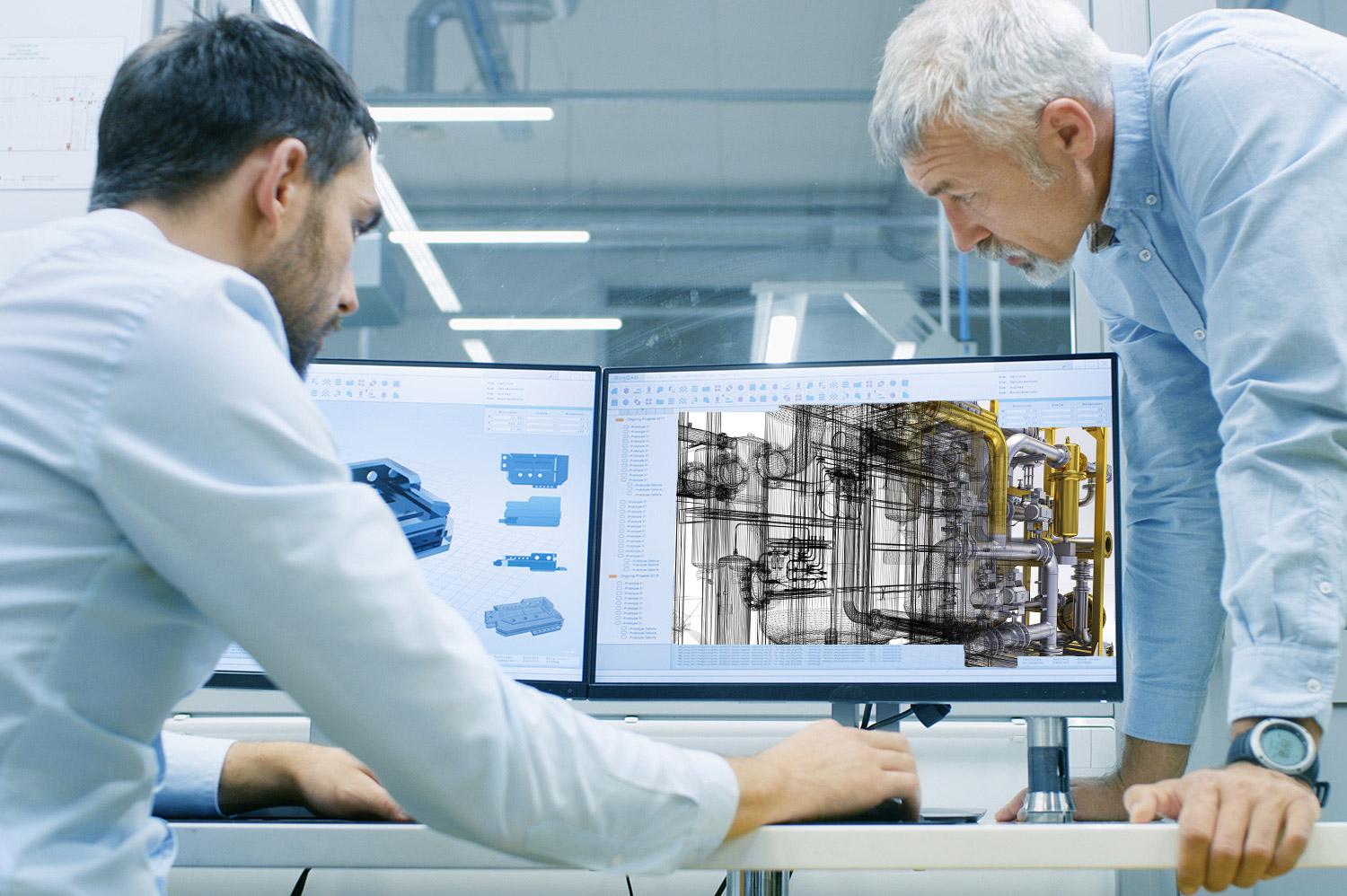

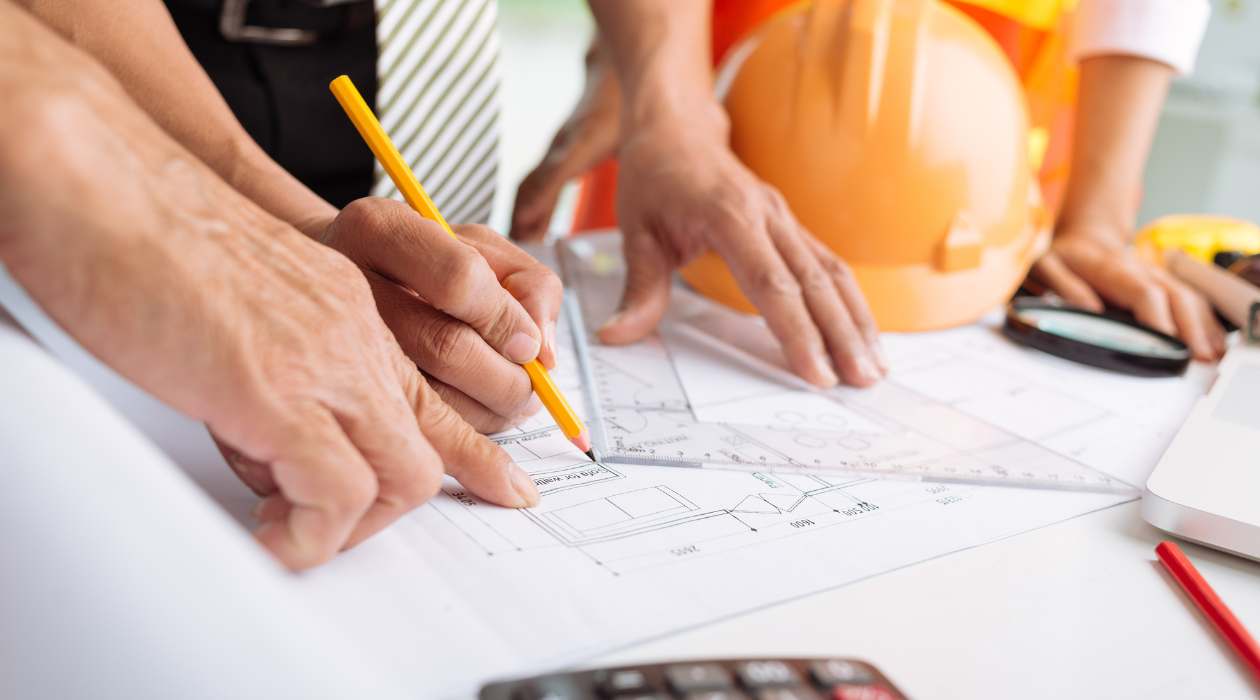
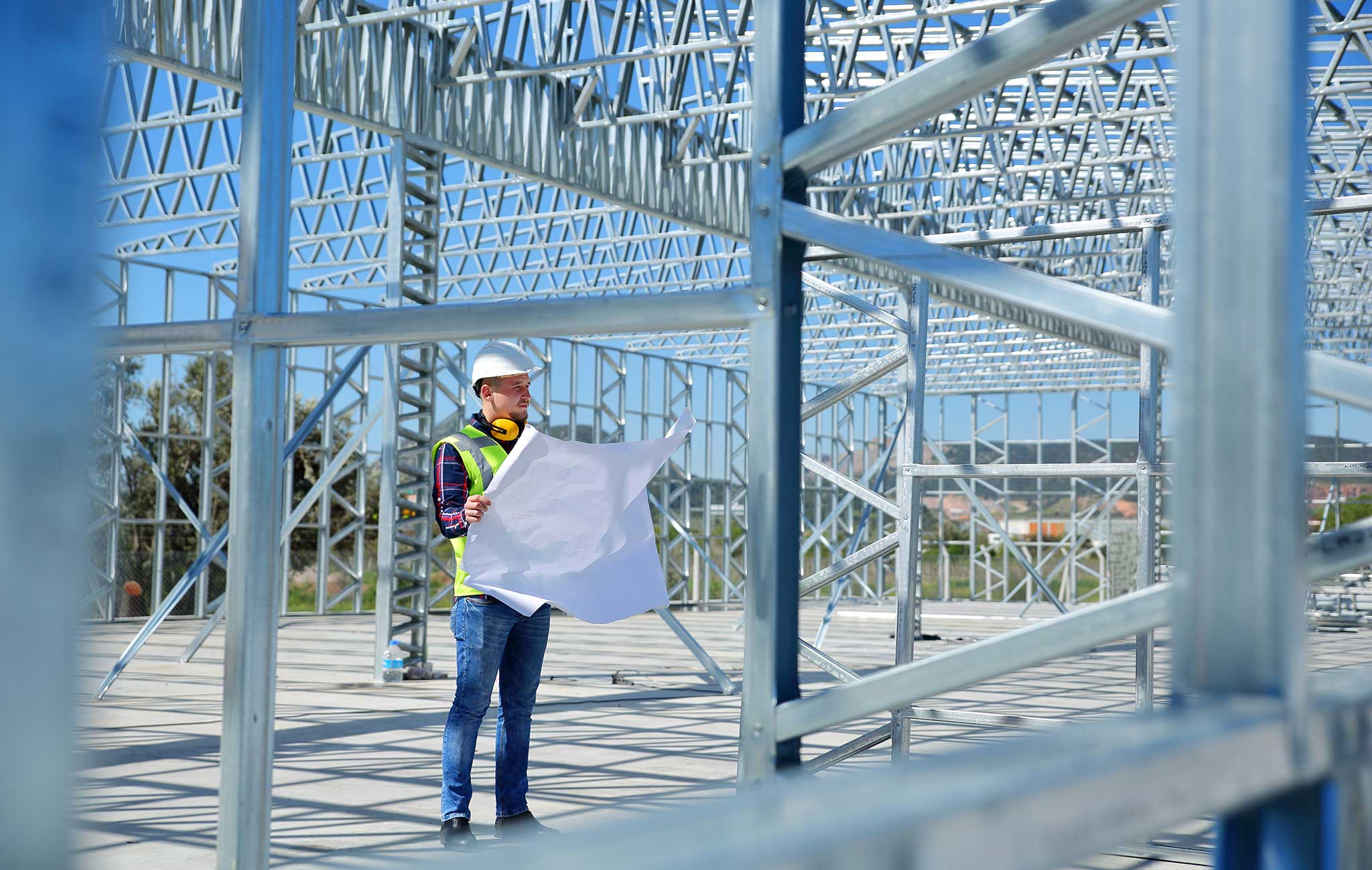



0 thoughts on “What Does An Urban Planning Engineer Do”